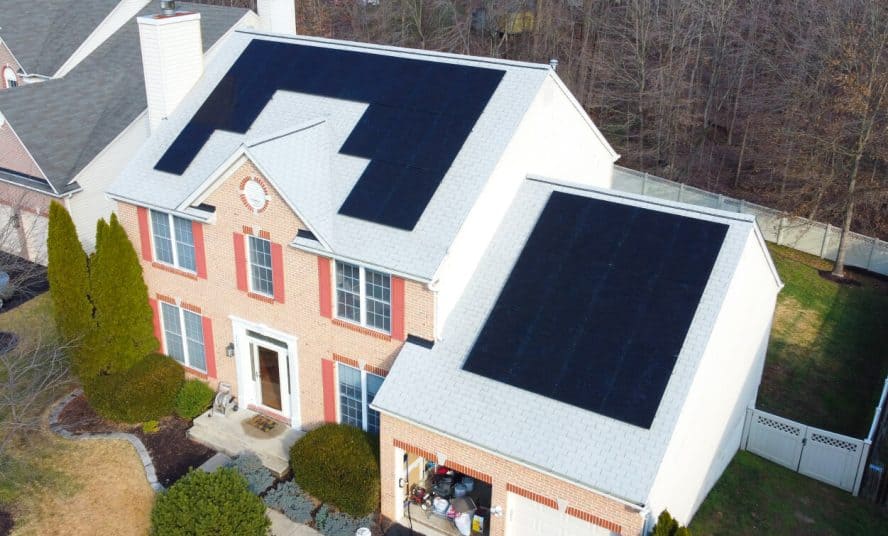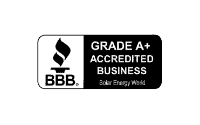Solar energy stands at the forefront of sustainable technology, offering homeowners an eco-friendly solution to their energy needs. This blog post explores the intricate balance between the upfront costs and the long-term financial rewards of solar panel installation.
As we delve into the nuances of solar energy savings, we aim to provide a comprehensive guide for those considering the transition to solar power. The focus here is not just on the immediate benefits, but on the enduring value solar panels bring to both your home and your wallet.
Initial Investment vs. Long-Term Savings of Going Solar
When considering the switch to solar energy, it’s important to evaluate both the initial investment and the long-term savings. This analysis allows homeowners to understand the full financial scope of installing solar panels.
Initial Investment
- Cost Dynamics in 2024: The cost of residential solar installations, typically calculated per watt, reflects technological advancements and market changes. Prices are influenced by panel quality, size of the system, and installation complexities.
- Factors Affecting Costs: High-efficiency panels and challenging installation environments can increase costs. However, economies of scale may reduce the price for larger installations.
- Federal and State Incentives: The federal tax credit, covering a percentage of the installation cost, significantly lowers initial expenses. Additionally, various state-specific incentives and rebates can further reduce upfront costs. Explore the incentives and credits available in your state by clicking on the links below:
Long-Term Savings
- Reduction in Utility Bills: Solar panels significantly reduce or eliminate monthly electricity bills, with savings varying based on local energy rates and solar system performance.
- Break-Even Point: The initial cost is offset by ongoing savings, typically reaching a break-even point in 6-10 years, depending on factors like system size and local electricity rates.
- Savings Over Lifespan: There are a variety of factors that will impact the total cost of your solar panel installation, but on average, MD homeowners spend between $12,000 and $17,000. To offset that cost, there are many credits, grants, and incentives to explore that can reduce the price substantially. Plus, a solar panel system typically pays for itself within 6 to 10 years.
- Added Property Value: Solar installations can increase a property’s value, providing financial benefits beyond direct energy savings.
This comprehensive view helps homeowners weigh the short-term financial commitment against the long-term financial gains, making an informed decision about solar energy investment.

Receive a No-Cost, Customized Solar Estimate for Your Home
How Solar Panel Savings Are Calculated
Calculating the savings from solar panels involves a multifaceted approach, encompassing various aspects of your household’s energy usage and the specifics of the solar system installed. At the core of this calculation are several key elements:
- Household Electricity Usage: The foundation for understanding solar savings is your home’s current electricity consumption. Measured in kilowatt hours (kWh), this figure dictates the size of the solar system needed to offset your energy use. Homes with higher energy consumption will require larger systems, which, while more costly upfront, offer greater potential savings.
- Solar Energy System Size: The capacity of your solar system, measured in kilowatts (kW), directly influences the amount of electricity it can generate. A system that matches or exceeds your home’s electricity usage maximizes savings by reducing reliance on grid power. The sizing of the system is a delicate balance between available space, budget, and energy needs.
- Purchase or Lease Options: The financial approach to acquiring a solar system – buying outright or leasing – has a significant impact on savings. Purchasing a system leads to higher upfront costs but results in greater long-term savings due to the elimination of ongoing lease payments. Leasing, while less costly upfront, may result in lower overall savings over the system’s lifespan. If you want to find out what could be your financing options, visit our pricing page.
- Sunlight Exposure and Roof Specifications: The amount of sunlight your location receives and the characteristics of your roof (such as its size, angle, and orientation) are crucial. Optimal sunlight exposure and a south-facing roof at the right angle can maximize solar energy production, thereby increasing savings. Roofs with limited space or those not ideally oriented may require additional considerations for efficient solar panel placement.
- Local Electricity Rates: The cost of electricity in your area is a pivotal factor. Higher rates mean greater potential savings as solar energy offsets more expensive grid power. In regions with lower electricity rates, the financial return of solar panels might be less, but still significant in the long term.
- Net Metering Policies: Net metering allows homeowners to send excess electricity generated by their solar panels back to the grid in exchange for credits. These credits can offset the cost of electricity drawn from the grid when solar production is insufficient, like during night-time. This policy can significantly increase savings, particularly in areas with favorable net metering regulations.
By considering these factors, homeowners can gain a comprehensive understanding of how solar panels can reduce their energy costs. The savings from solar panels are not just a direct subtraction of electricity costs; they represent a complex interplay of personal energy use, system characteristics, financial decisions, and local environmental factors. This detailed calculation enables homeowners to make informed decisions about their solar investments, maximizing both their financial return and their contribution to a greener future.
Average Annual and Lifetime Savings from Solar Panels
The financial impact of a standard 6 kW solar system is notable in terms of both annual and long-term savings. Annually, homeowners can experience significant reductions in their electricity bills, with the extent of savings depending on local electricity rates and the efficiency of the solar panels. Over the lifespan of the system, typically 25 to 30 years, these benefits become even more pronounced. Not only can the savings cover the initial cost of installation, but they continue to accrue, offering financial relief against rising electricity rates.
The savings from a 6 kW system vary by location. For example, in California, homeowners might see annual savings between $835 and $1,878, while in Texas, the range could be $528 to $1,187. This variation highlights the long-term financial advantage of solar energy as a smart investment for homeowners looking to decrease energy costs and increase value over time.
State-Specific Solar Savings
The potential for solar savings varies significantly across different states, influenced by a combination of local electricity costs and the availability of solar incentives. For example, states with higher electricity rates often see greater savings from solar installations due to the higher cost of grid electricity being offset. Additionally, states that offer robust solar incentives, such as tax credits or rebates, can enhance the financial benefits of going solar.
This variability means that the financial return on solar investments can differ widely from one state to another. In states where electricity costs are lower and solar incentives are minimal, the savings might be less pronounced, yet still present a worthwhile investment over the long term.
To explore the specific solar savings potential in your state and to understand how factors like local electricity rates and solar incentives can impact your solar investment, we encourage you to visit our Solar-by-State page. Here, you’ll find detailed information tailored to each state we operate in, offering deeper insights into state-specific solar savings, payback periods, and more.
Breaking Down the Payback Period
The payback period for solar panels is a crucial consideration for homeowners, as it indicates when the savings from the system will offset its initial cost. This period can vary based on local electricity rates, the efficiency of the solar panels, and available incentives. Higher electricity rates can lead to quicker payback due to greater savings, while high-efficiency panels might offer faster returns despite higher upfront costs.
Additionally, solar incentives can significantly reduce the initial investment, further shortening the payback period. As electricity rates are projected to increase, the savings from solar energy become more substantial, making the investment more appealing and reducing the time it takes to start realizing net savings.
Weighing the Decision
Adopting solar energy is not just an environmentally conscious decision but also a financially wise one. Although the upfront costs may appear substantial, the long-term financial and environmental benefits are significant.
As we move towards a more sustainable future, comprehending the full spectrum of benefits offered by solar panels becomes crucial. Homeowners are advised to consider the short-term costs against the long-term gains, making an informed choice that aligns with both their financial objectives and environmental values.




















